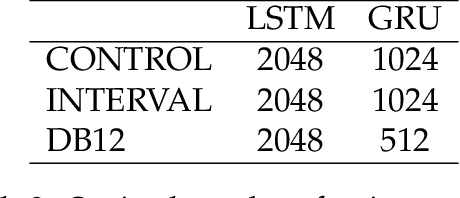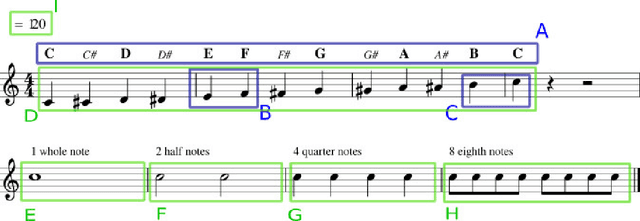Sebastian Garcia-Valencia
A framework to compare music generative models using automatic evaluation metrics extended to rhythm
Jan 19, 2021



Abstract:To train a machine learning model is necessary to take numerous decisions about many options for each process involved, in the field of sequence generation and more specifically of music composition, the nature of the problem helps to narrow the options but at the same time, some other options appear for specific challenges. This paper takes the framework proposed in a previous research that did not consider rhythm to make a series of design decisions, then, rhythm support is added to evaluate the performance of two RNN memory cells in the creation of monophonic music. The model considers the handling of music transposition and the framework evaluates the quality of the generated pieces using automatic quantitative metrics based on geometry which have rhythm support added as well.
Sequence Generation using Deep Recurrent Networks and Embeddings: A study case in music
Dec 02, 2020



Abstract:Automatic generation of sequences has been a highly explored field in the last years. In particular, natural language processing and automatic music composition have gained importance due to the recent advances in machine learning and Neural Networks with intrinsic memory mechanisms such as Recurrent Neural Networks. This paper evaluates different types of memory mechanisms (memory cells) and analyses their performance in the field of music composition. The proposed approach considers music theory concepts such as transposition, and uses data transformations (embeddings) to introduce semantic meaning and improve the quality of the generated melodies. A set of quantitative metrics is presented to evaluate the performance of the proposed architecture automatically, measuring the tonality of the musical compositions.
Embeddings as representation for symbolic music
May 19, 2020


Abstract:A representation technique that allows encoding music in a way that contains musical meaning would improve the results of any model trained for computer music tasks like generation of melodies and harmonies of better quality. The field of natural language processing has done a lot of work in finding a way to capture the semantic meaning of words and sentences, and word embeddings have successfully shown the capabilities for such a task. In this paper, we experiment with embeddings to represent musical notes from 3 different variations of a dataset and analyze if the model can capture useful musical patterns. To do this, the resulting embeddings are visualized in projections using the t-SNE technique.
 Add to Chrome
Add to Chrome Add to Firefox
Add to Firefox Add to Edge
Add to Edge